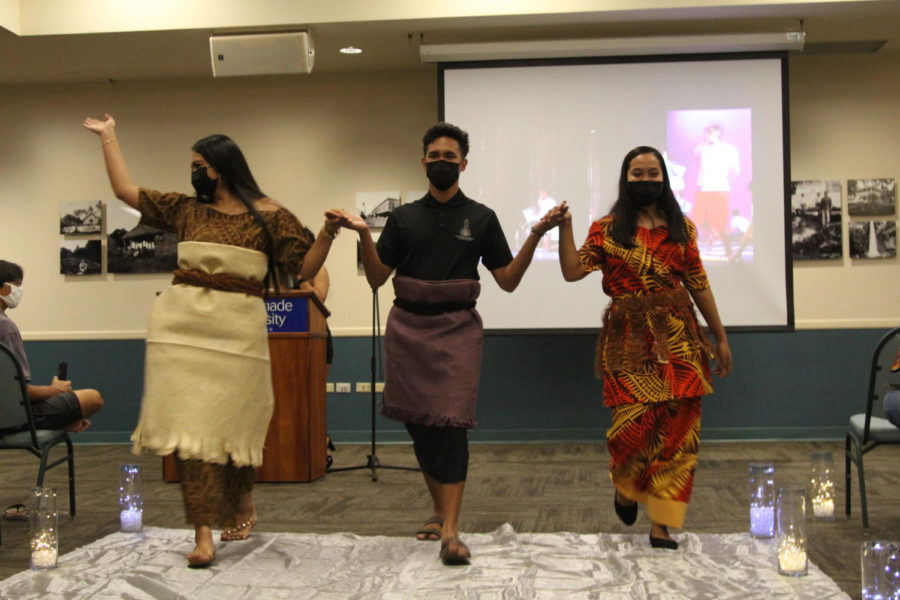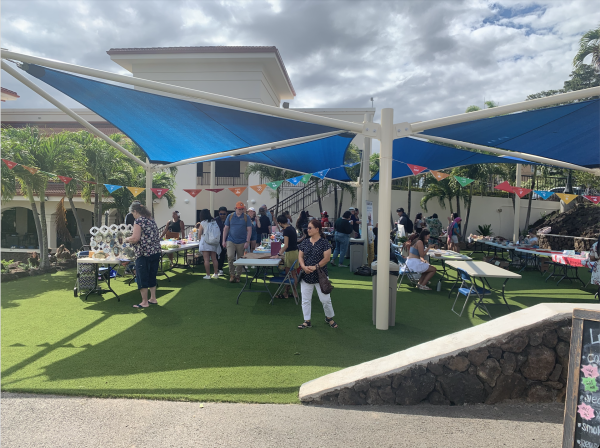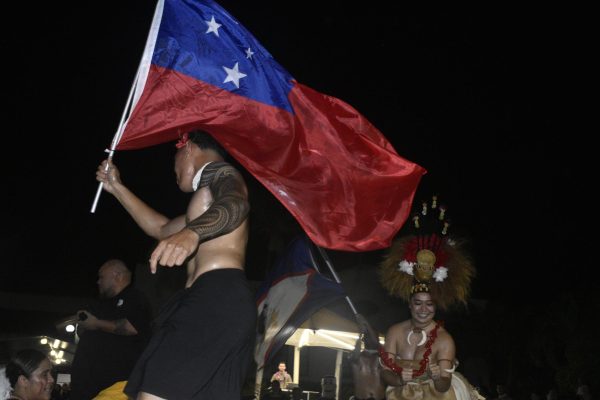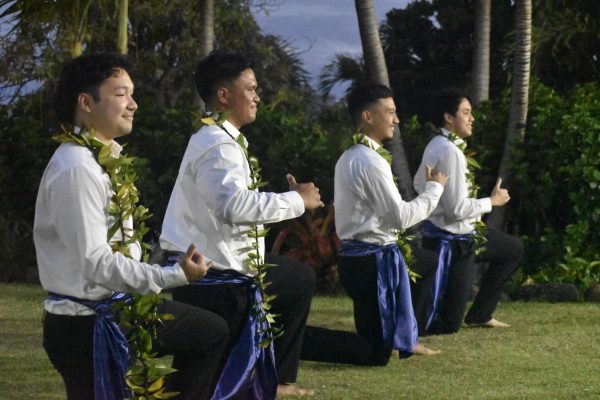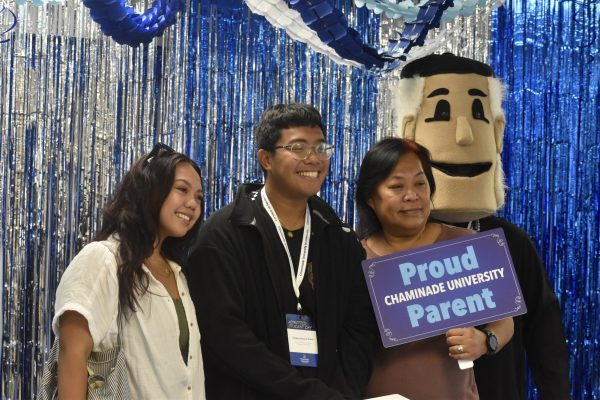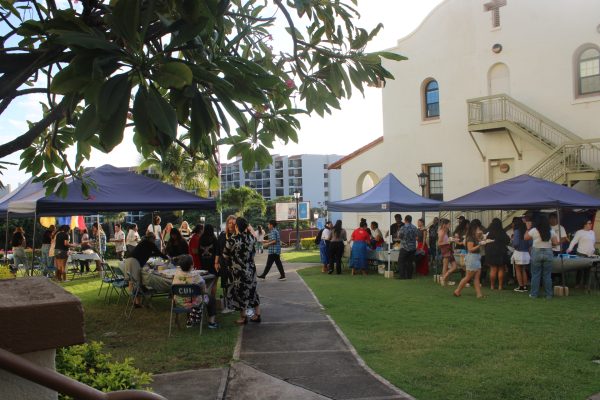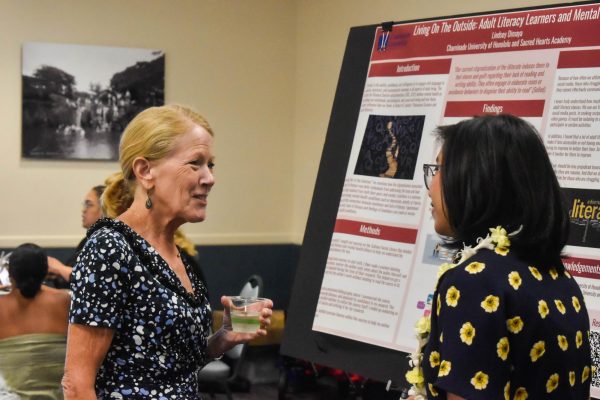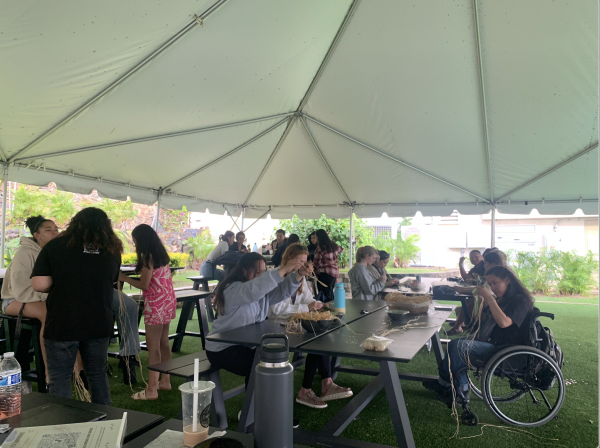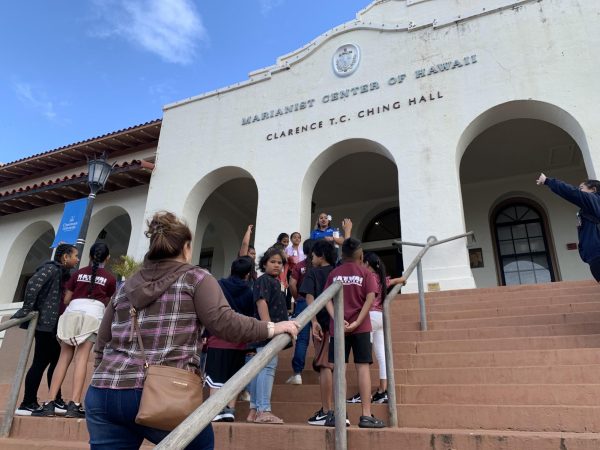Panel Encourages CUH to Appreciate, Rather than Appropriate, Culture
Students are depicted wearing traditional Tongan attire. The fashion show allowed faculty, staff, and students to immerse themselves in the various cultures and traditions within the CUH community and around the world.
Melissa Dela Cruz, Office of Student Activities and Leadership (OSAL) student coordinator, was scrolling through TikTok and came across a video advertisement of a sports drink that struck her with shock. She said the brand was culturally appropriating Hawaiian culture by styling a young woman with a coconut bra and a fake green grass skirt.
This sparked her idea to host Chaminade University’s first cultural fashion show “My Culture Is Not A Costume” on Sept. 29 at the Ching Conference Center to encourage the CUH community to appreciate, rather than appropriate, culture in time for Halloween.
“I just wanted to bring it to attention that some things that you do, if you’re trying to showcase a culture, that there is a right way to do it and a wrong way to do it, so this is kind of a way to show students that,” Dela Cruz said. “That is why I’m hosting [the event] at the end of the month to kind of like lean it into October just to kind of also show that ‘do not do this for Halloween please.'”
The fashion show showcased traditional attires from different cultures ranging from traditional to modern styles. Students, faculty, and staff had the opportunity to immerse themselves in the various cultures and traditions within the CUH community and around the world. Along with the fashion show, Kahoali’i K. Keahi-Wood, a cultural engagement specialist at Chaminade, was the guest speaker. The fashion show ended with an interactive activity the audience could participate in.
The evening started off with an oli (Hawaiian chant) performed by Kaipo Leopoldino, a teacher from St. Louis School. Then the cultural fashion show followed with faculty, staff, and students walking down a runway in the middle of the Ching Conference hall adorned with their culture’s traditional attire. There was representation from the Philippines, China, Mexico, and Tonga, to name a few.
As the fashion show came close to an end, Chaminade Student Government Association (CSGA) president, Josephine “Fina” Iose, performed a song as an interlude to Keahi-Wood’s talk on cultural appreciation and appropriation.
Tyanna Hemmings, a first-year Forensic Science major at CUH, enjoyed her experience and said she now has a new point of view on cultures and how cultures are different and could be similar.
“I guess it’s important to expose the people to different cultures because a lot of people are used to being home a lot so this exposure can then lead them to being more curious and people can even be encouraged to research on their own time,” Hemmings said.
To close, OSAL encouraged the audience to participate in a “Post-it wall” activity. On one wall, participants anonymously wrote on a Post-it note sharing their cultural appropriation experiences. On a second wall, adjacent to the first wall, participants wrote something motivational and appreciative of their culture on a Post-it.
Emily Ramirez Miranda, a third-year Environmental Science major at CUH, participated in the fashion show by wearing a jarocho, a traditional dress from Veracruz, Mexico. She said she was proud to display her culture.
“Over the years I’ve been embarrassed of it just ‘cause in school I would get bullied about it, but now going to college it’s like I shouldn’t be embarrassed about who I am cause this is who I am this is who I will be in the future as well,” Ramirez Miranda said. “And I hope if I ever have kids I would want to spread that culture as well to them.”
